Abstract
Human altruistic responding (called give responding), which delivered a reinforcer to someone other than the responder, was compared to responding where the responder was the recipient of the reinforcer (called earn responding). The same type of response (button pressing), the same reinforcer (a point representing a penny), and the same reinforcer contingency (a 40-response fixed-ratio schedule) were used for both give and earn responding. Since points representing pennies were used to reinforce give and earn responding, responding for points not worth money was also assessed. Give, earn, and point responding were arranged as concurrent incompatible operants. Lowest rates were obtained for point responding. Compared to earn responding, give responding occurred at lower rates, was more susceptible to cessation when point responding was possible, extinguished more rapidly in the absence of money, and produced less responding during reconditioning compared to conditioning when reconditioning followed a period of nonreinforcement. Give responding was less when it reduced the giver's opportunity to earn. Finally, histories of getting reinforcement from others were shown to determine give responding.
Keywords: altruism, giving, earning, point responding, extinction, concurrent incompatible operant, past getting, confederate, humans
Full text
PDF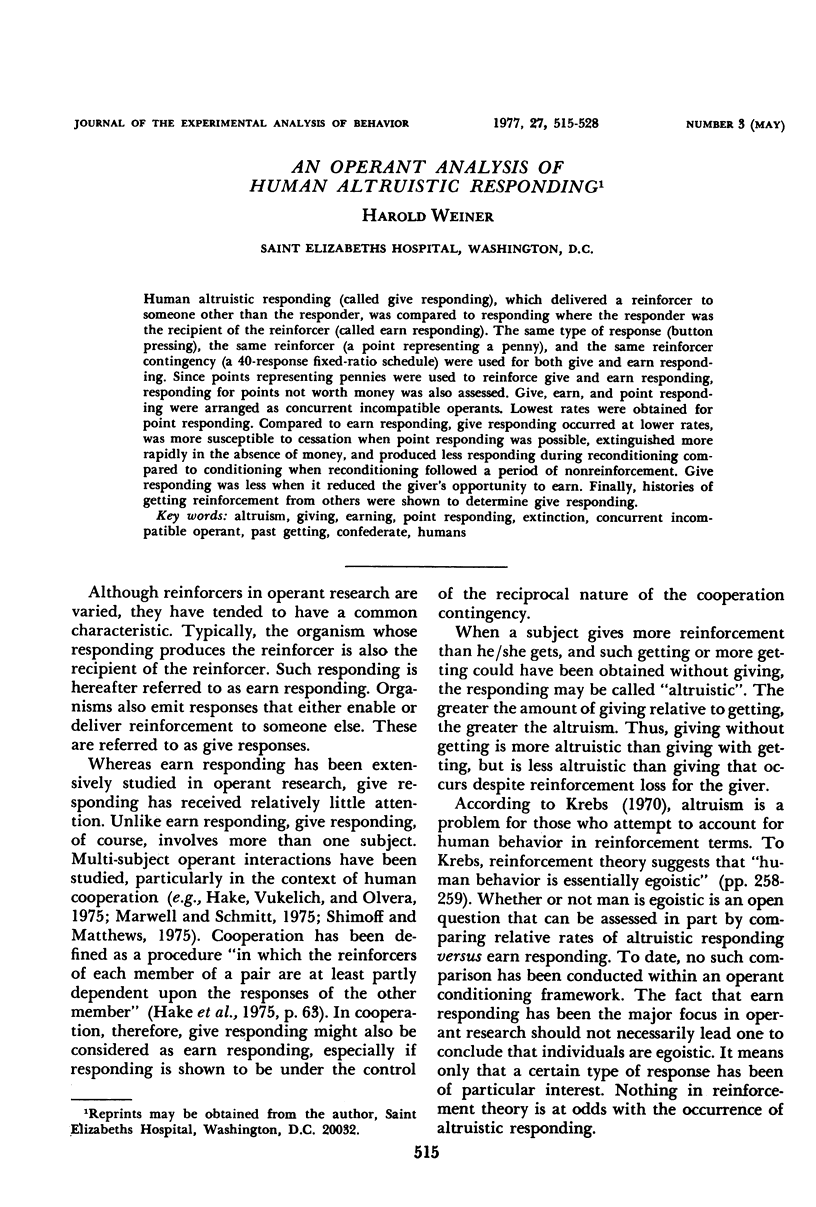
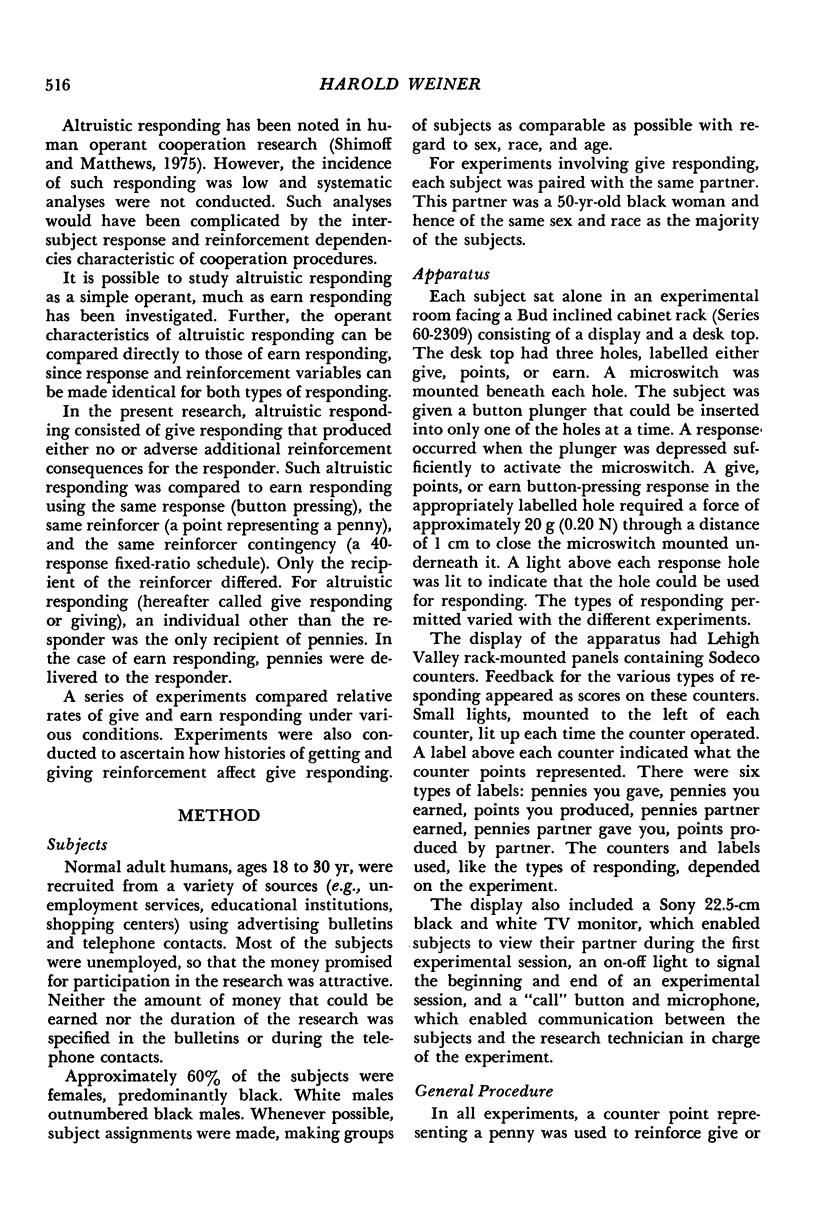
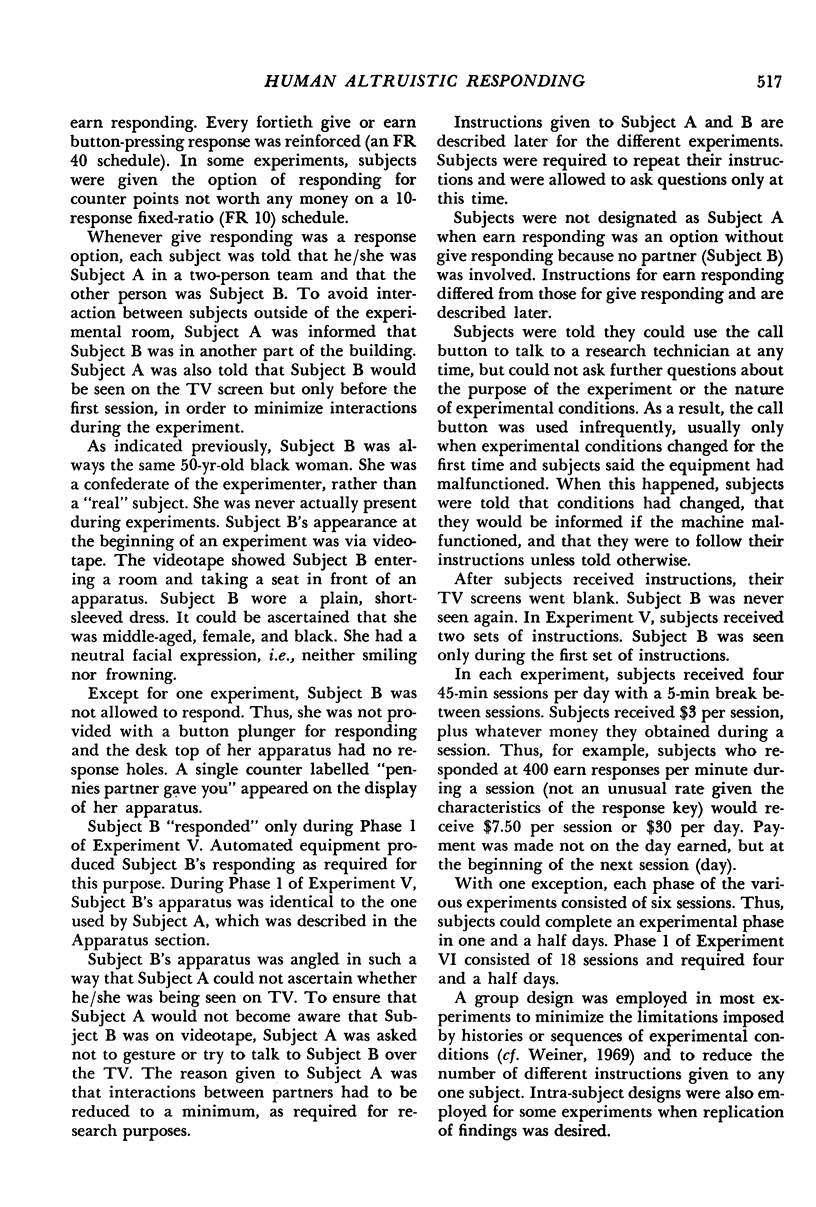
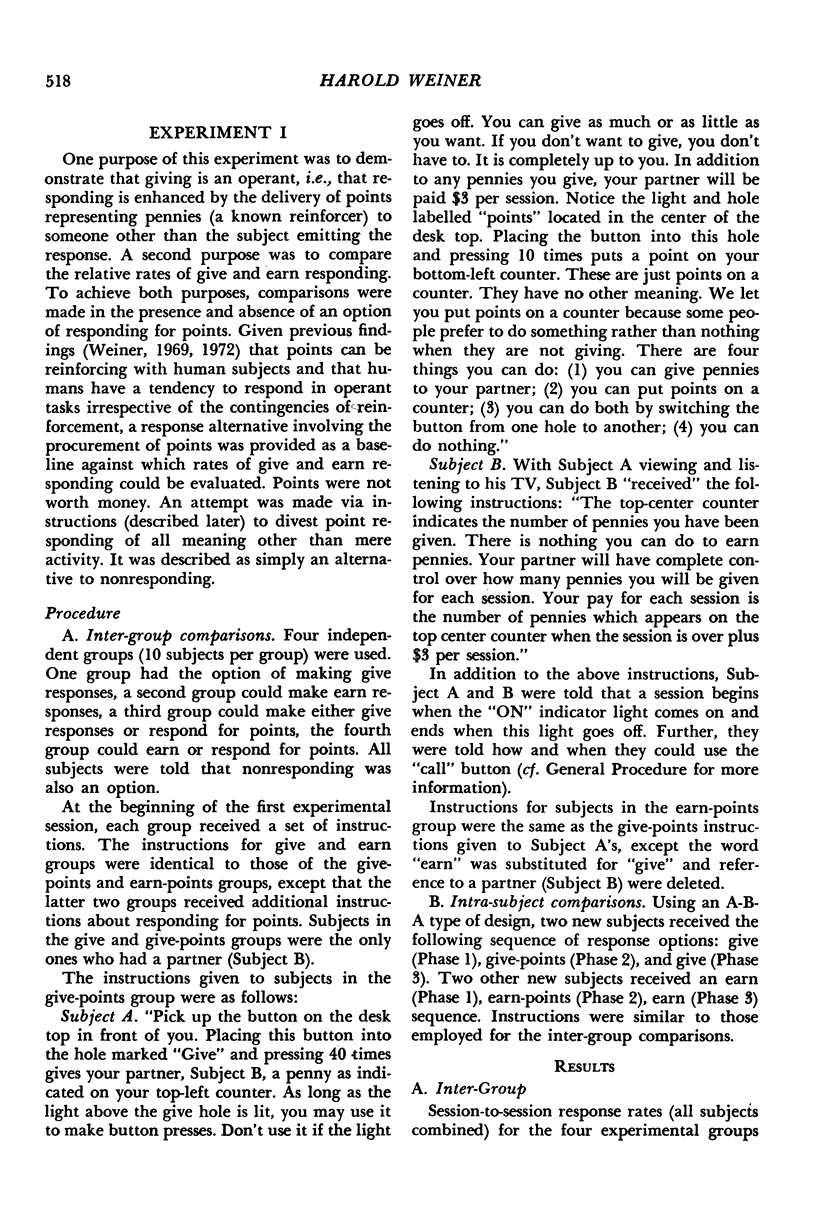
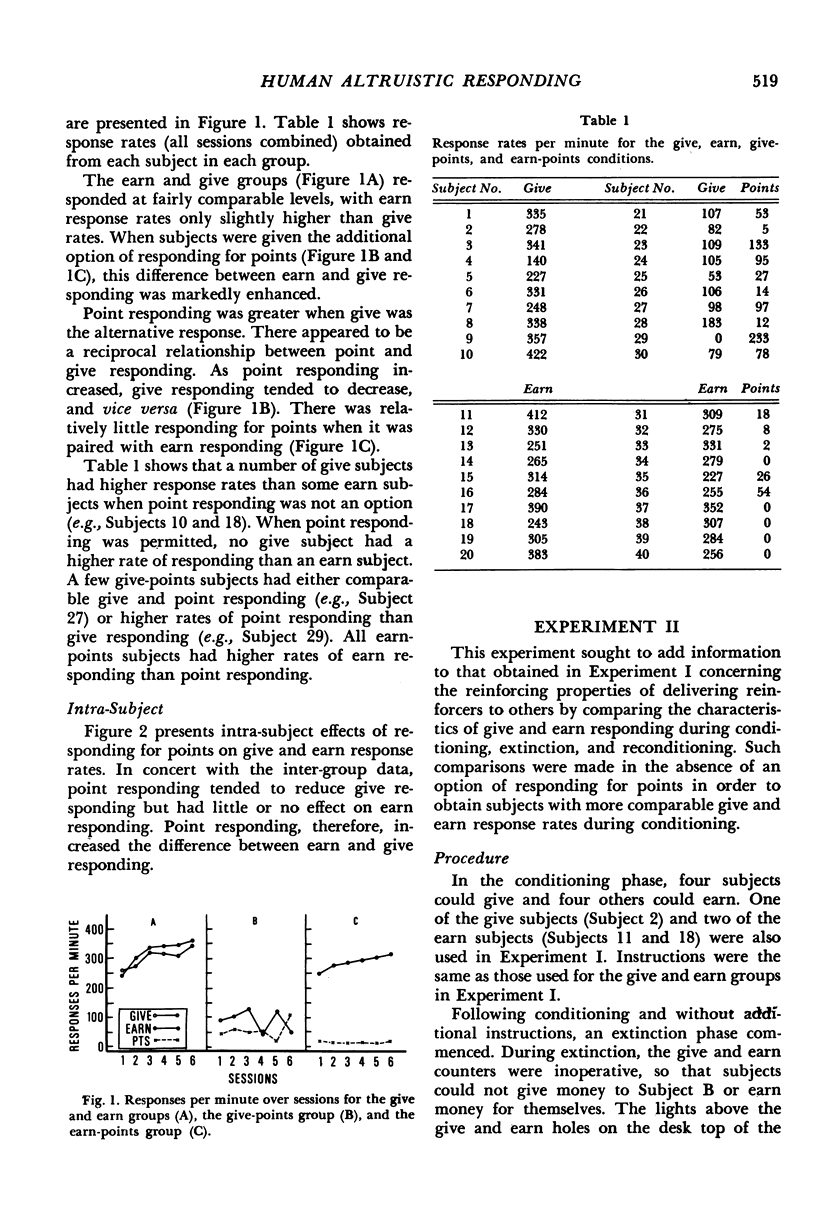
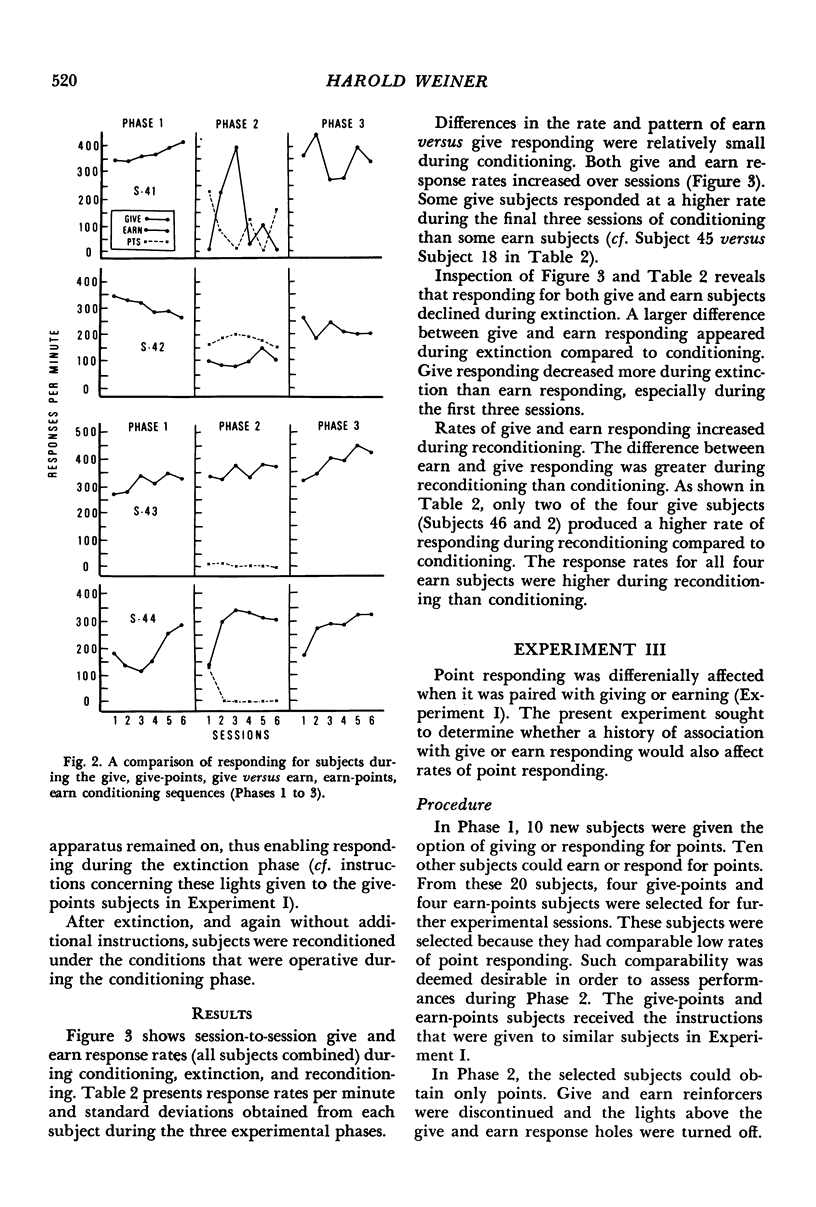
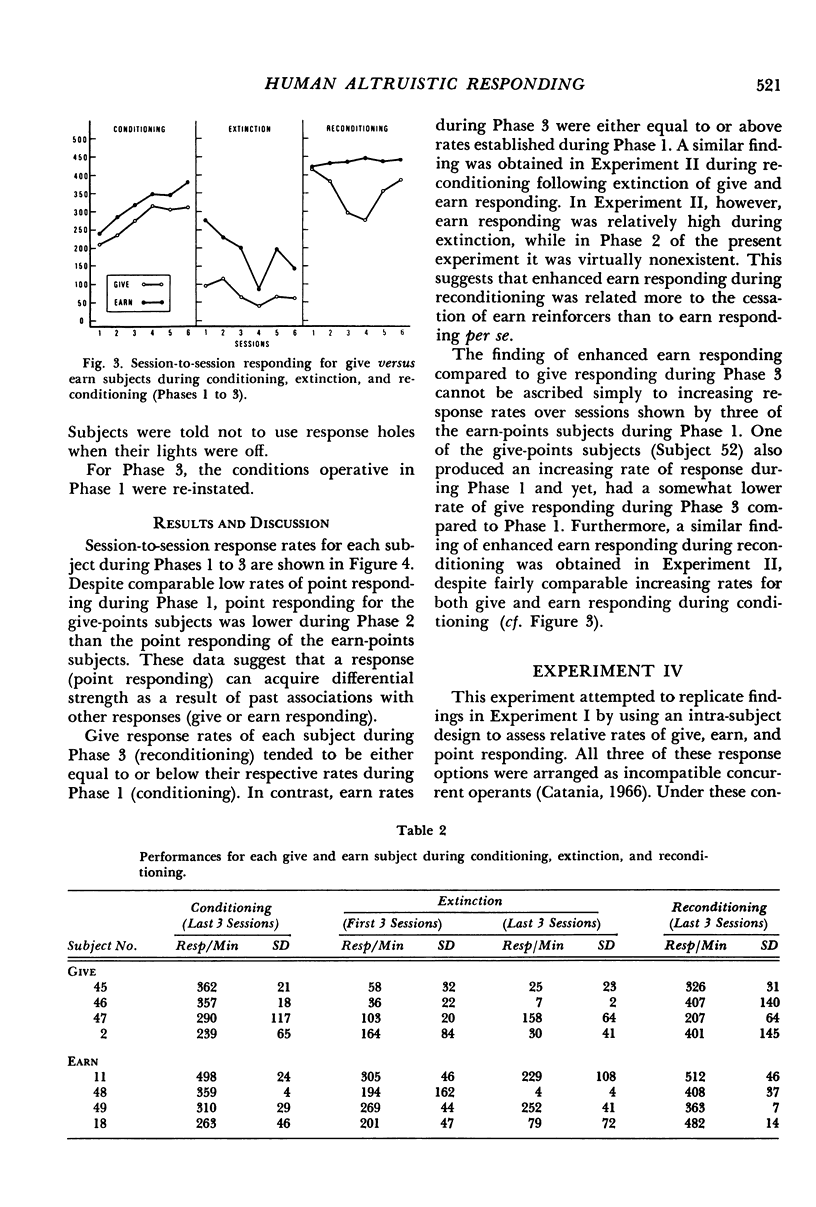
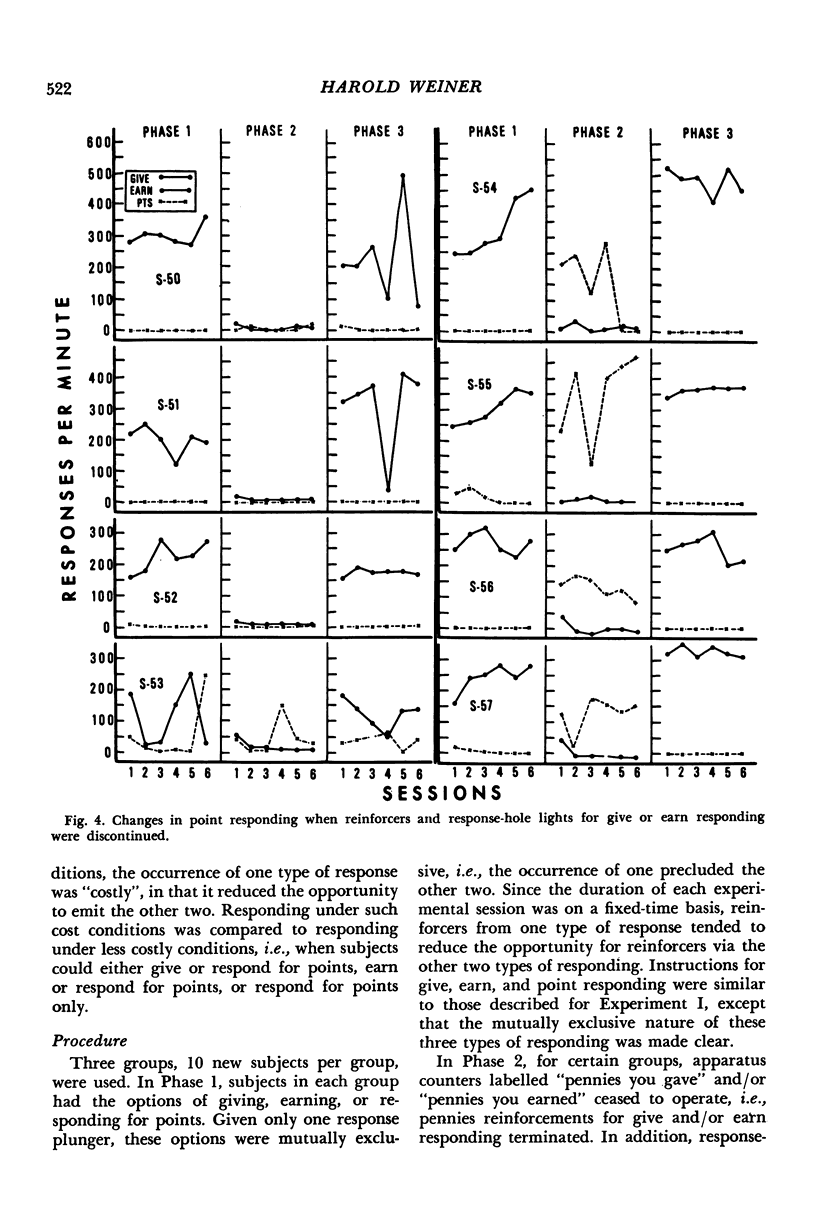
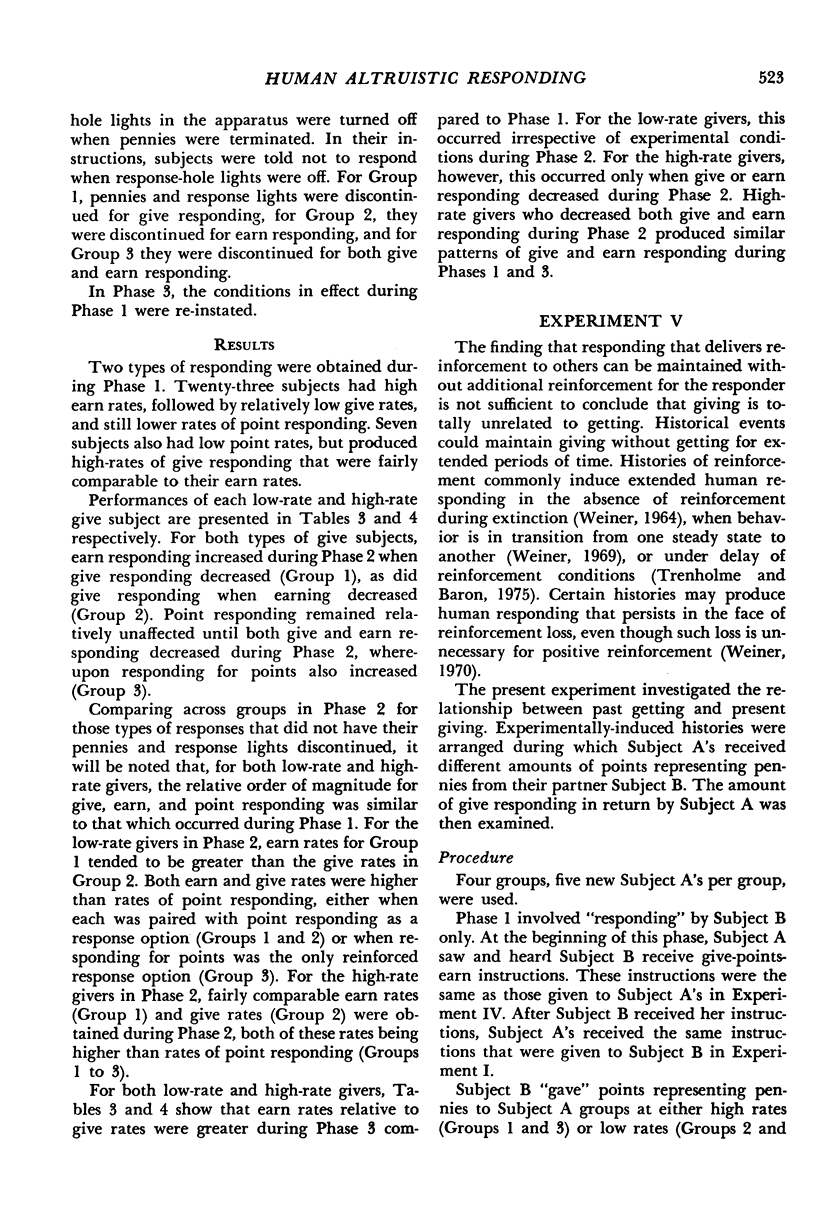
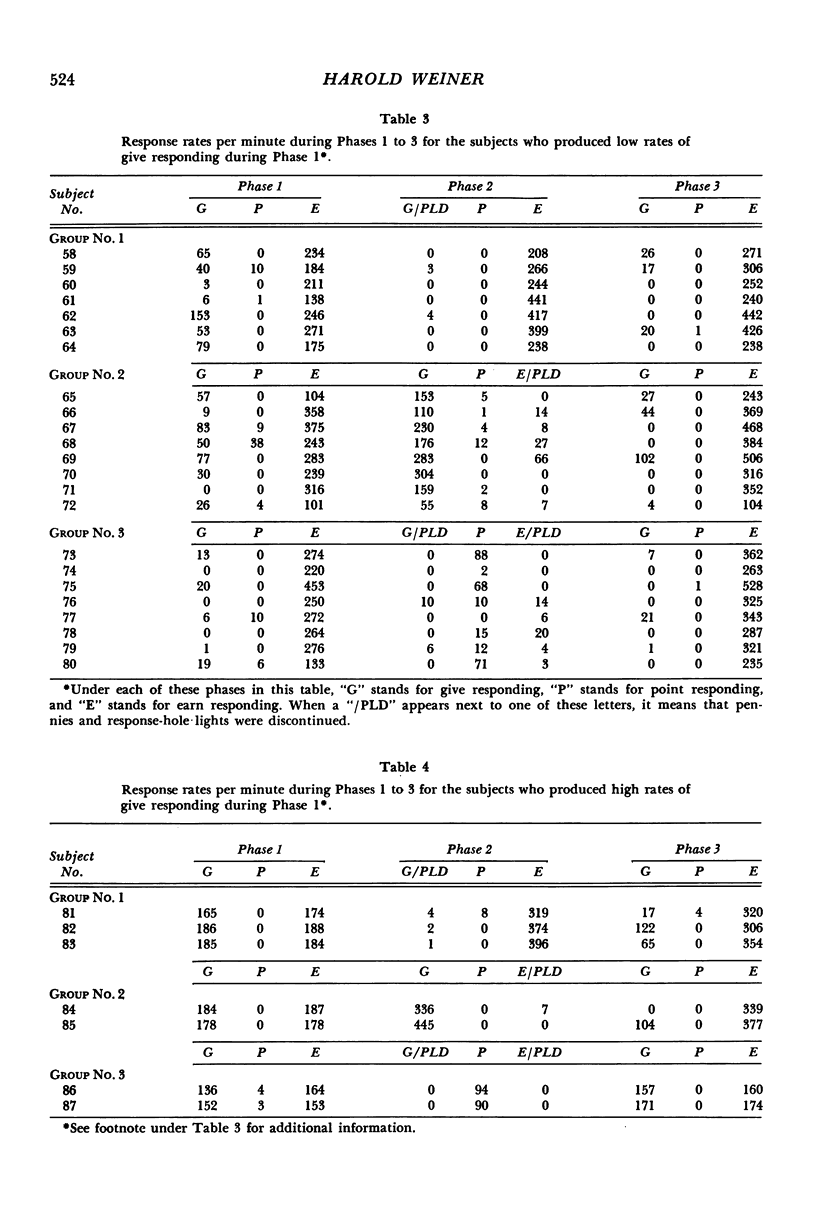
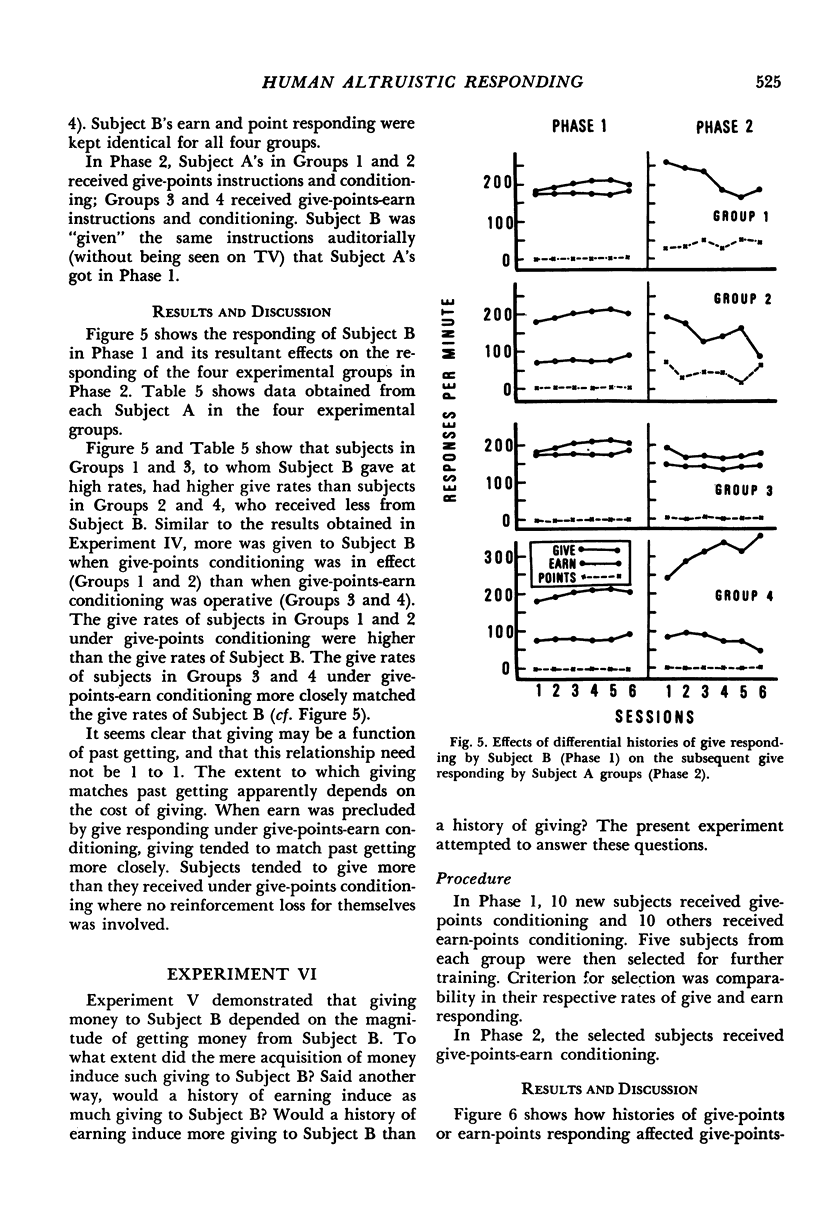
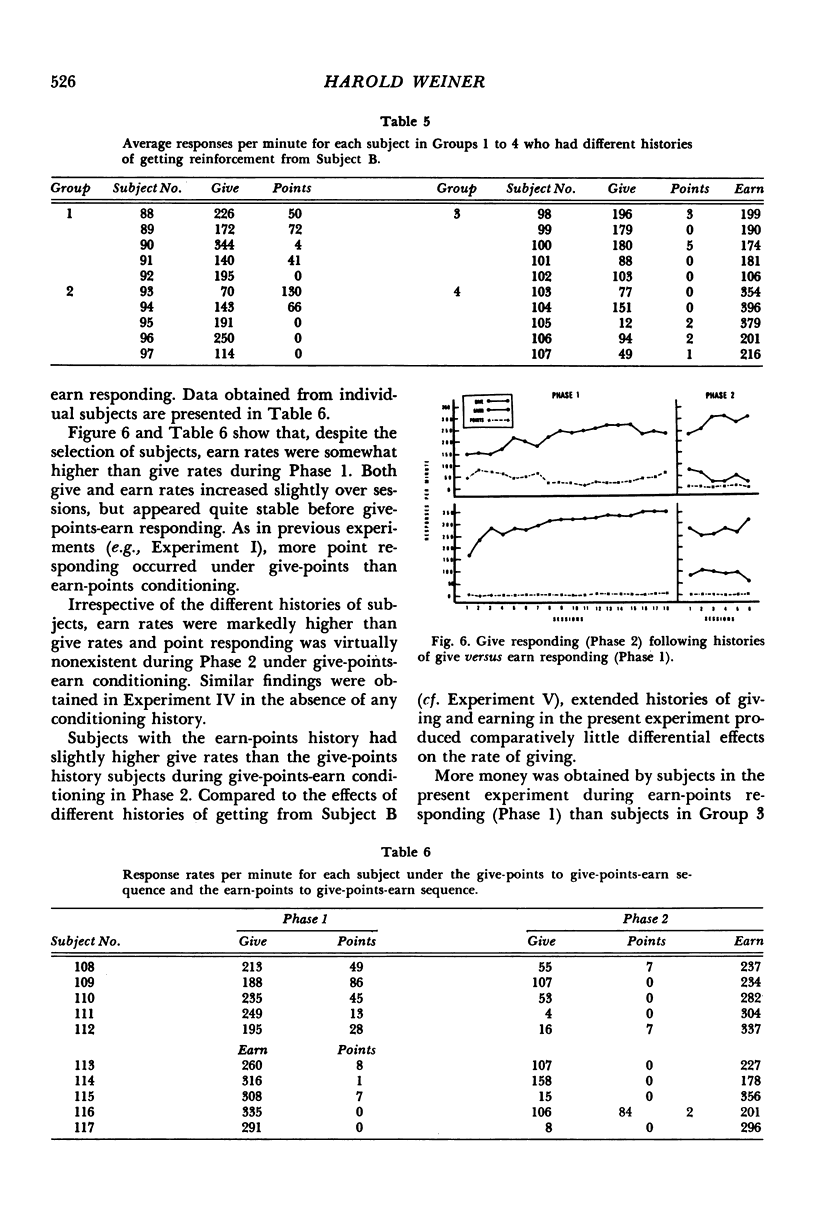
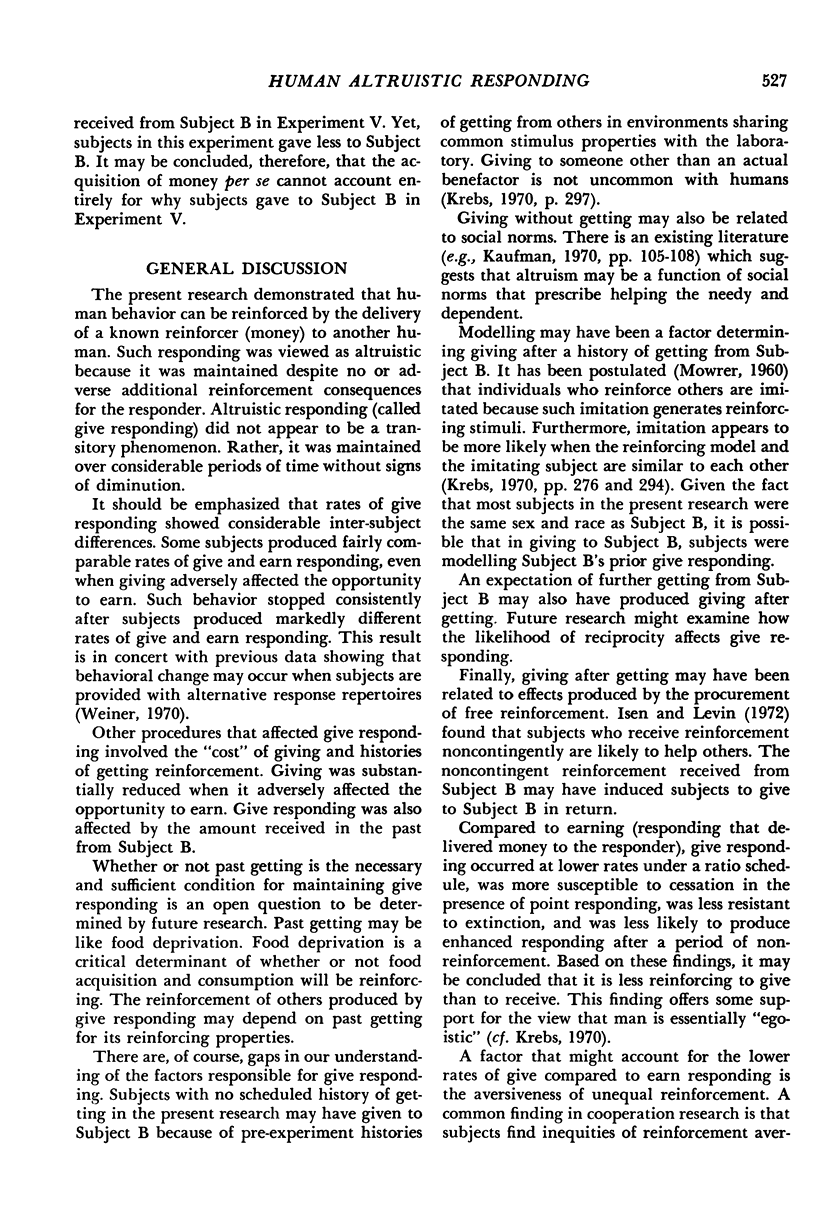
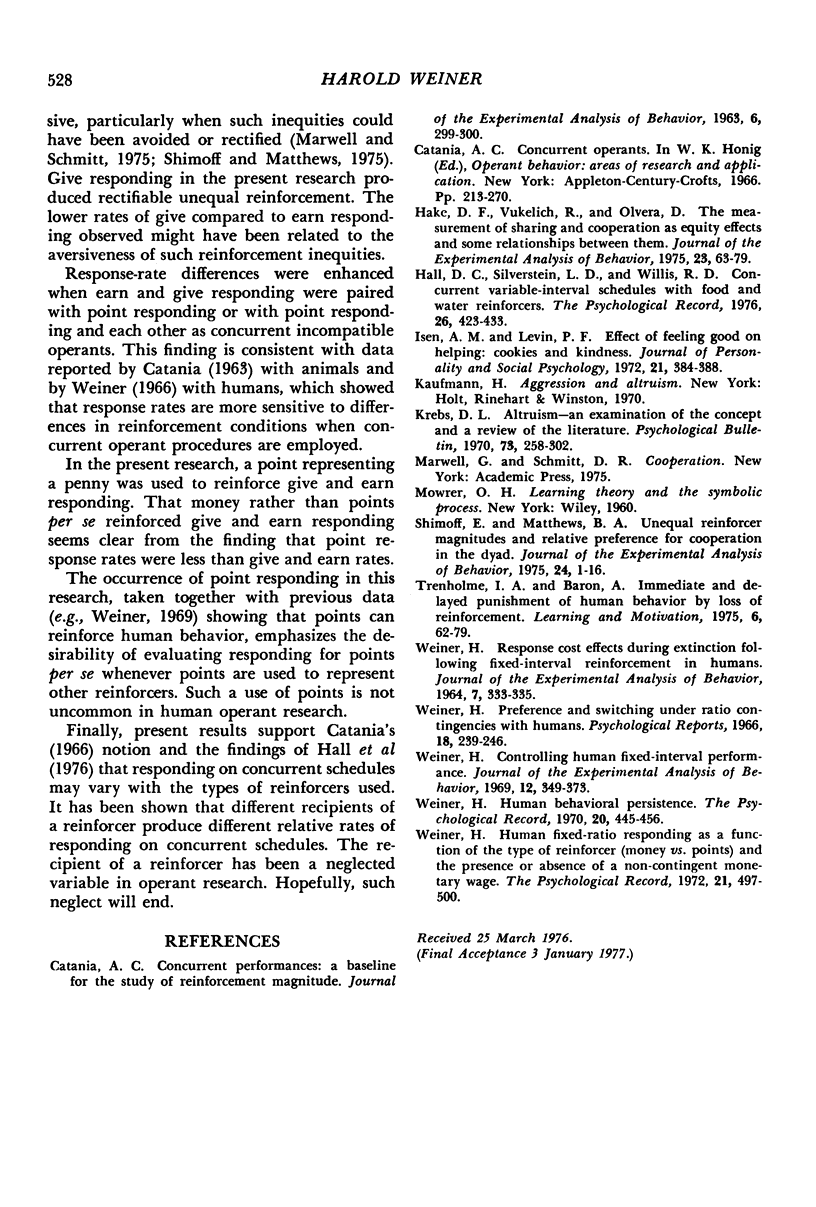
Selected References
These references are in PubMed. This may not be the complete list of references from this article.
- CATANIA A. C. Concurrent performances: a baseline for the study of reinforcement magnitude. J Exp Anal Behav. 1963 Apr;6:299–300. doi: 10.1901/jeab.1963.6-299. [DOI] [PMC free article] [PubMed] [Google Scholar]
- Hake D. F., Vukelich R., Olvera D. The measurement of sharing and cooperation as equity effects and some relationships between them. J Exp Anal Behav. 1975 Jan;23(1):63–79. doi: 10.1901/jeab.1975.23-63. [DOI] [PMC free article] [PubMed] [Google Scholar]
- Isen A. M., Levin P. F. Effect of feeling good on helping: cookies and kindness. J Pers Soc Psychol. 1972 Mar;21(3):384–388. doi: 10.1037/h0032317. [DOI] [PubMed] [Google Scholar]
- Shimoff E., Matthews B. A. Unequal reinforcer magnitudes and relative preference for cooperation in the dyad. J Exp Anal Behav. 1975 Jul;24(1):1–16. doi: 10.1901/jeab.1975.24-1. [DOI] [PMC free article] [PubMed] [Google Scholar]
- WEINER H. RESPONSE COST EFFECTS DURING EXTINCTION FOLLOWING FIXED-INTERVAL REINFORCEMENT IN HUMANS. J Exp Anal Behav. 1964 Jul;7:333–335. doi: 10.1901/jeab.1964.7-333. [DOI] [PMC free article] [PubMed] [Google Scholar]
- Weiner H. Controlling human fixed-interval performance. J Exp Anal Behav. 1969 May;12(3):349–373. doi: 10.1901/jeab.1969.12-349. [DOI] [PMC free article] [PubMed] [Google Scholar]
- Weiner H. Preference and switching under ratio contingencies with humans. Psychol Rep. 1966 Feb;18(1):239–246. doi: 10.2466/pr0.1966.18.1.239. [DOI] [PubMed] [Google Scholar]


